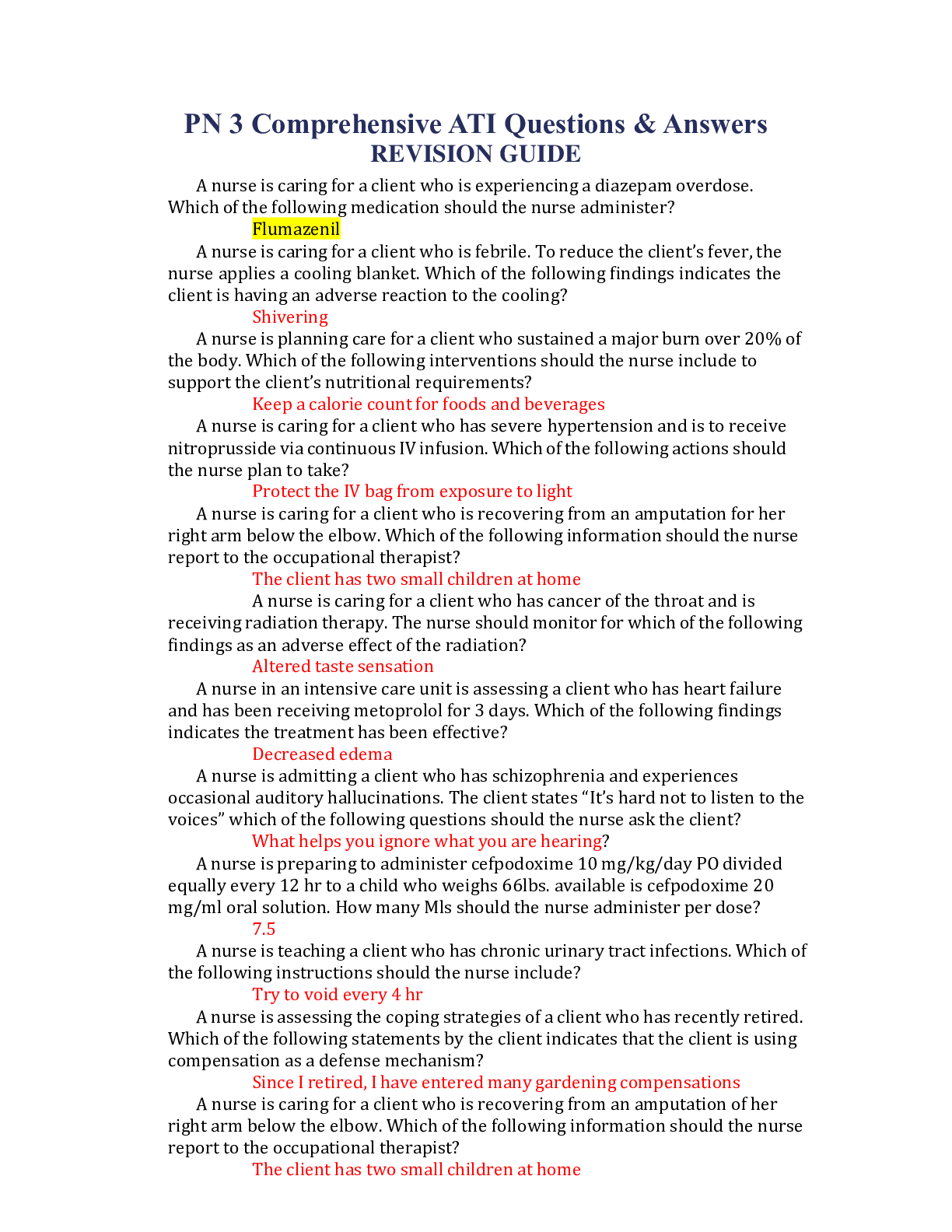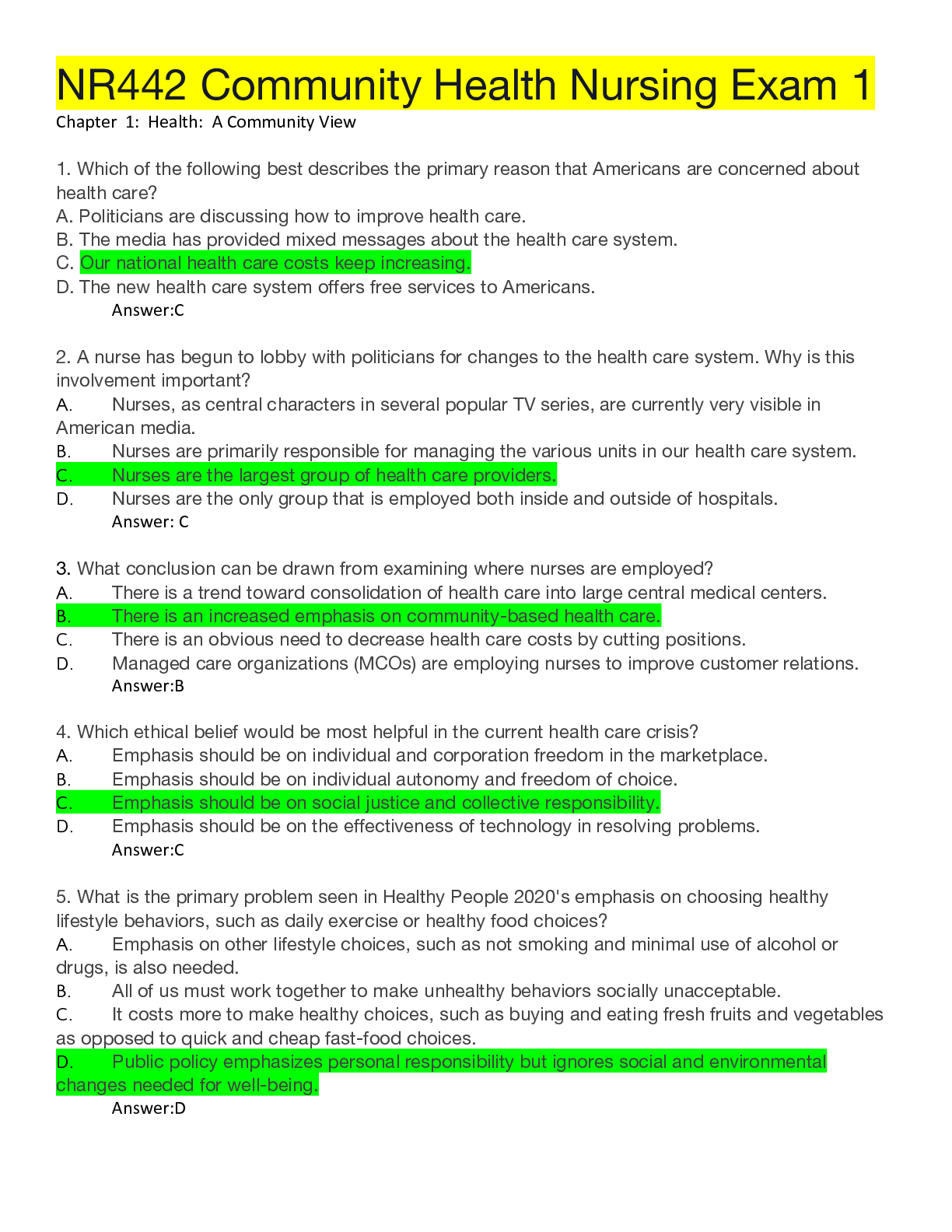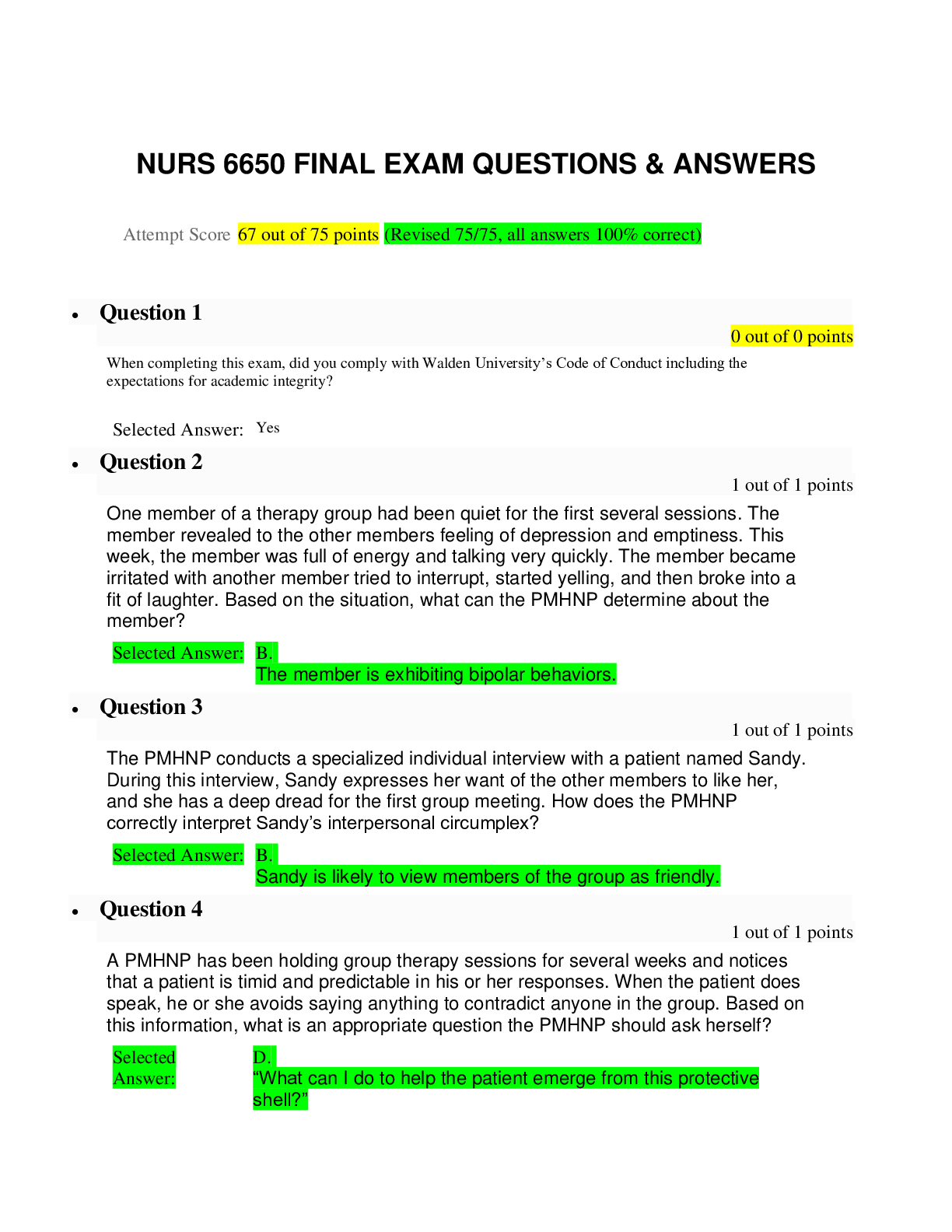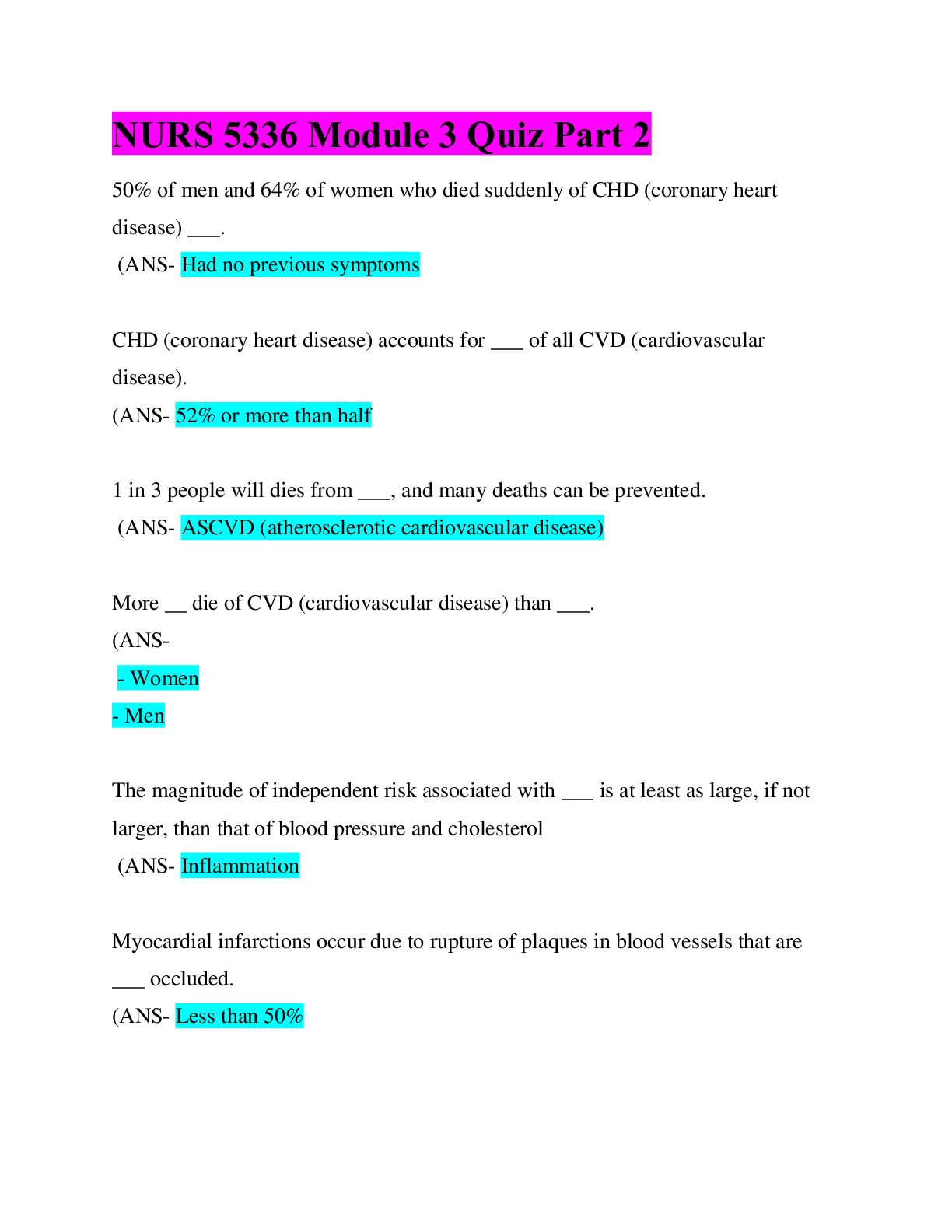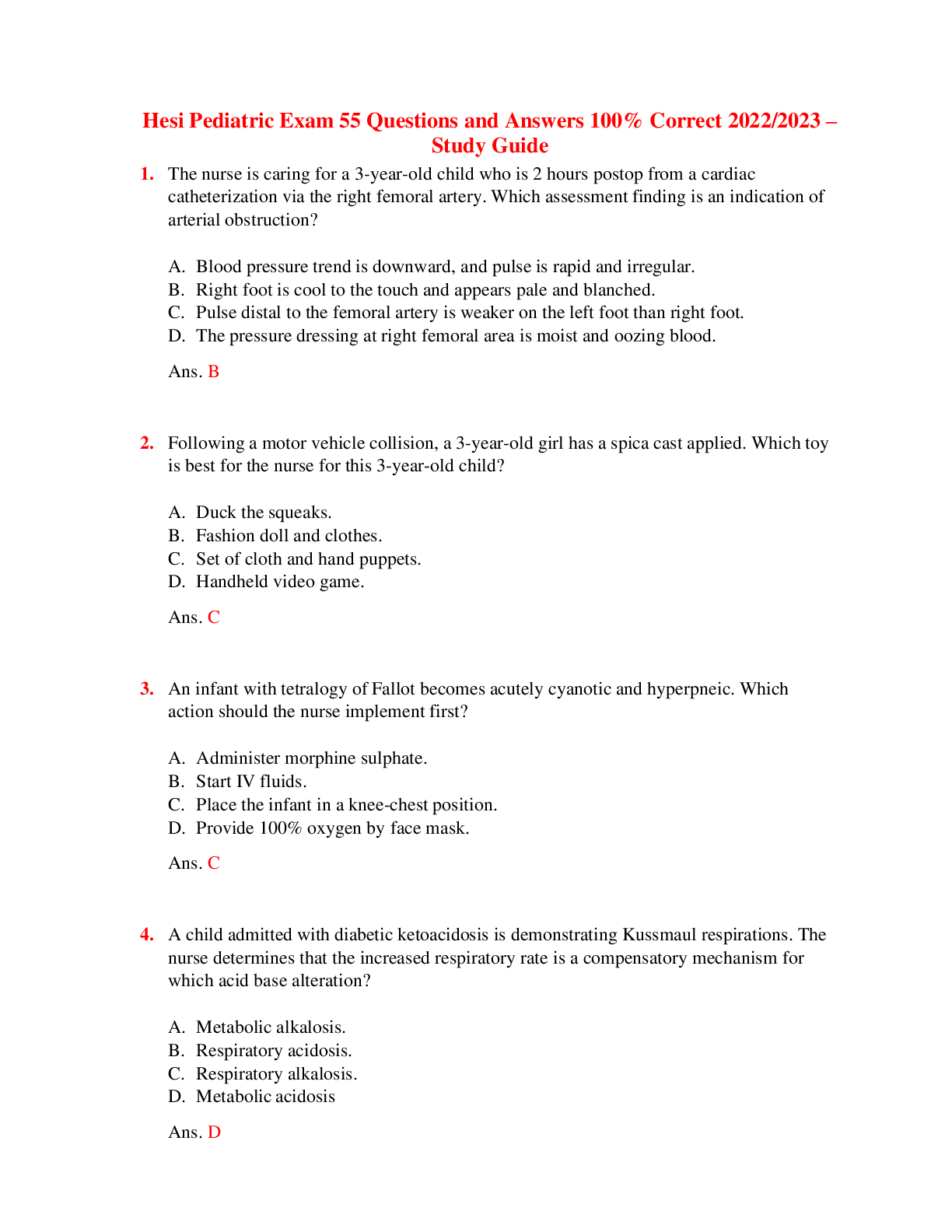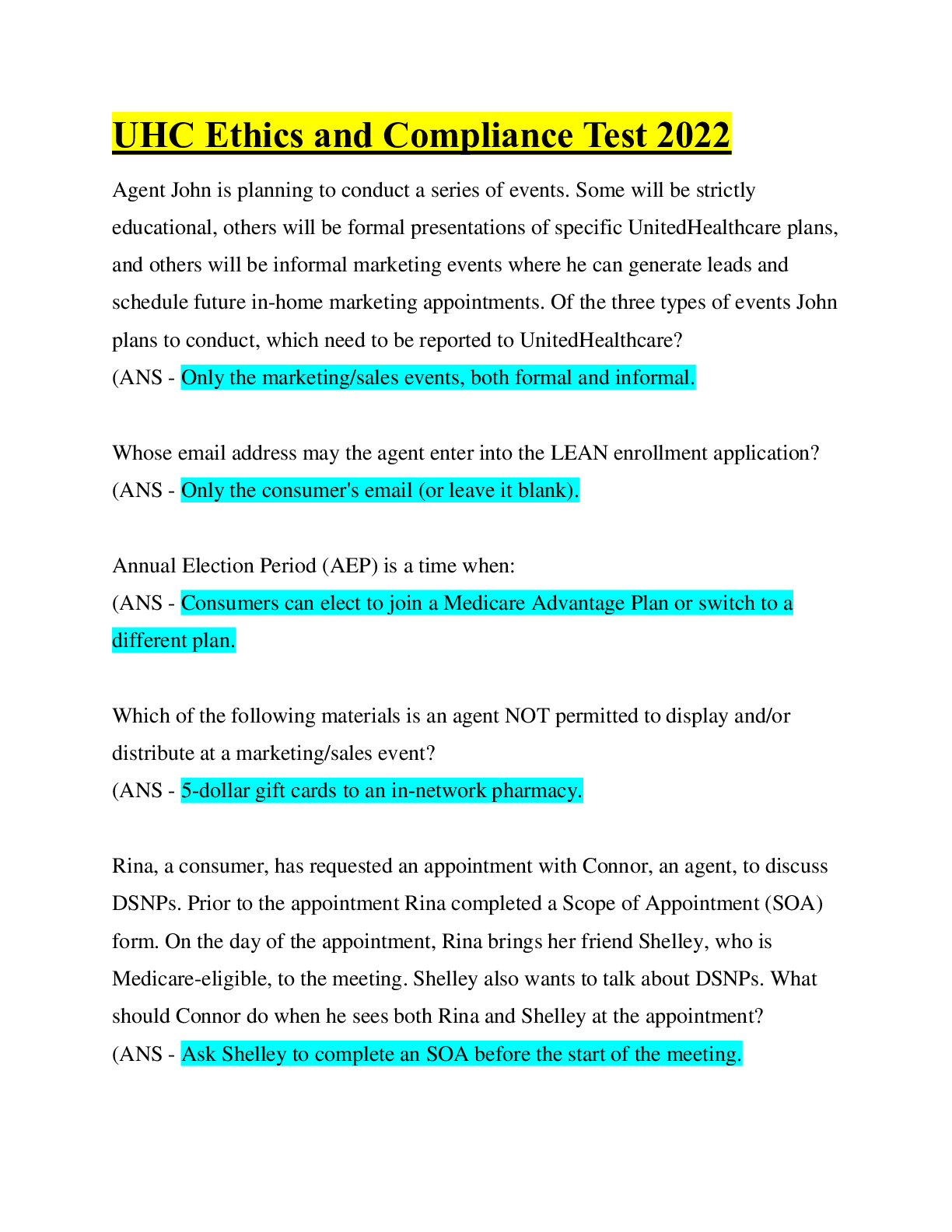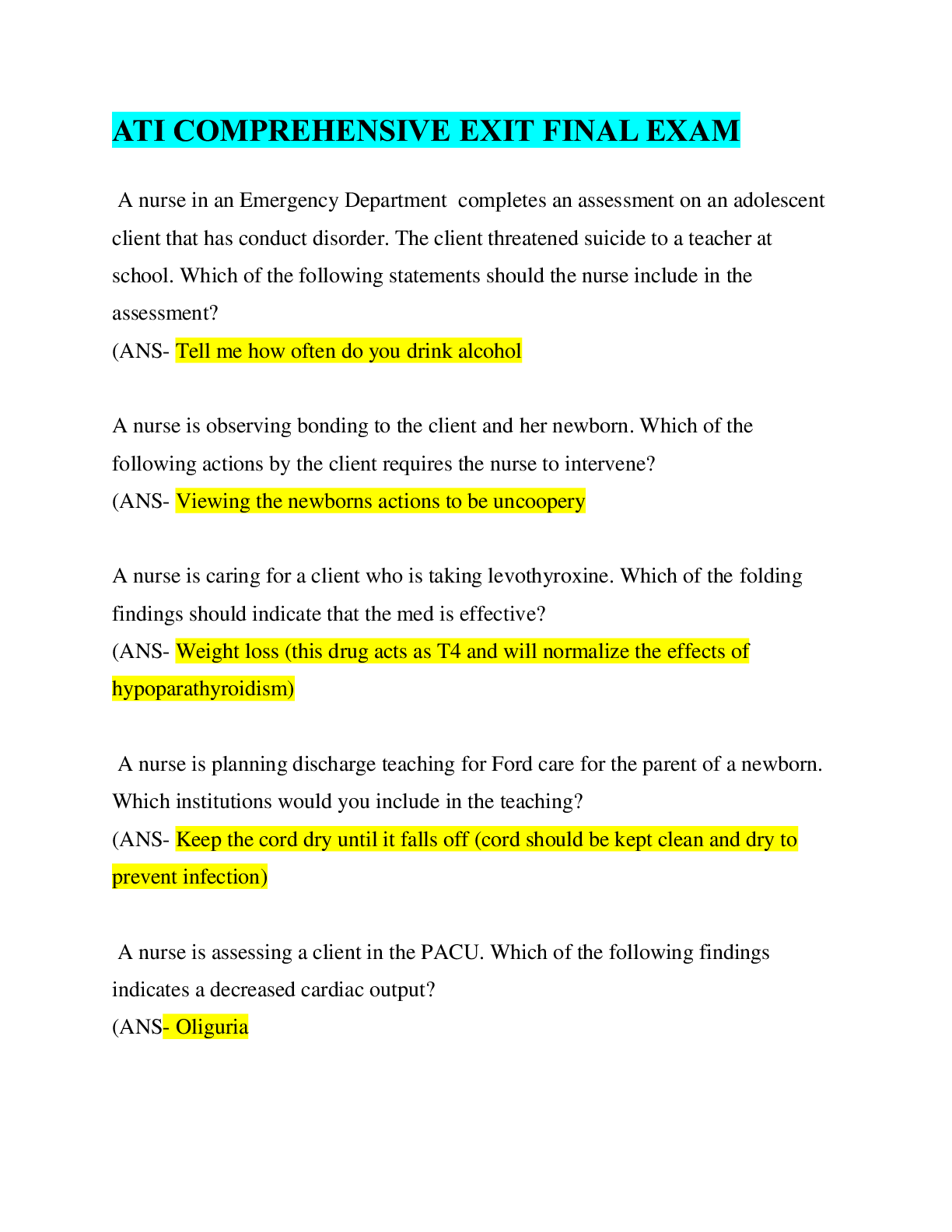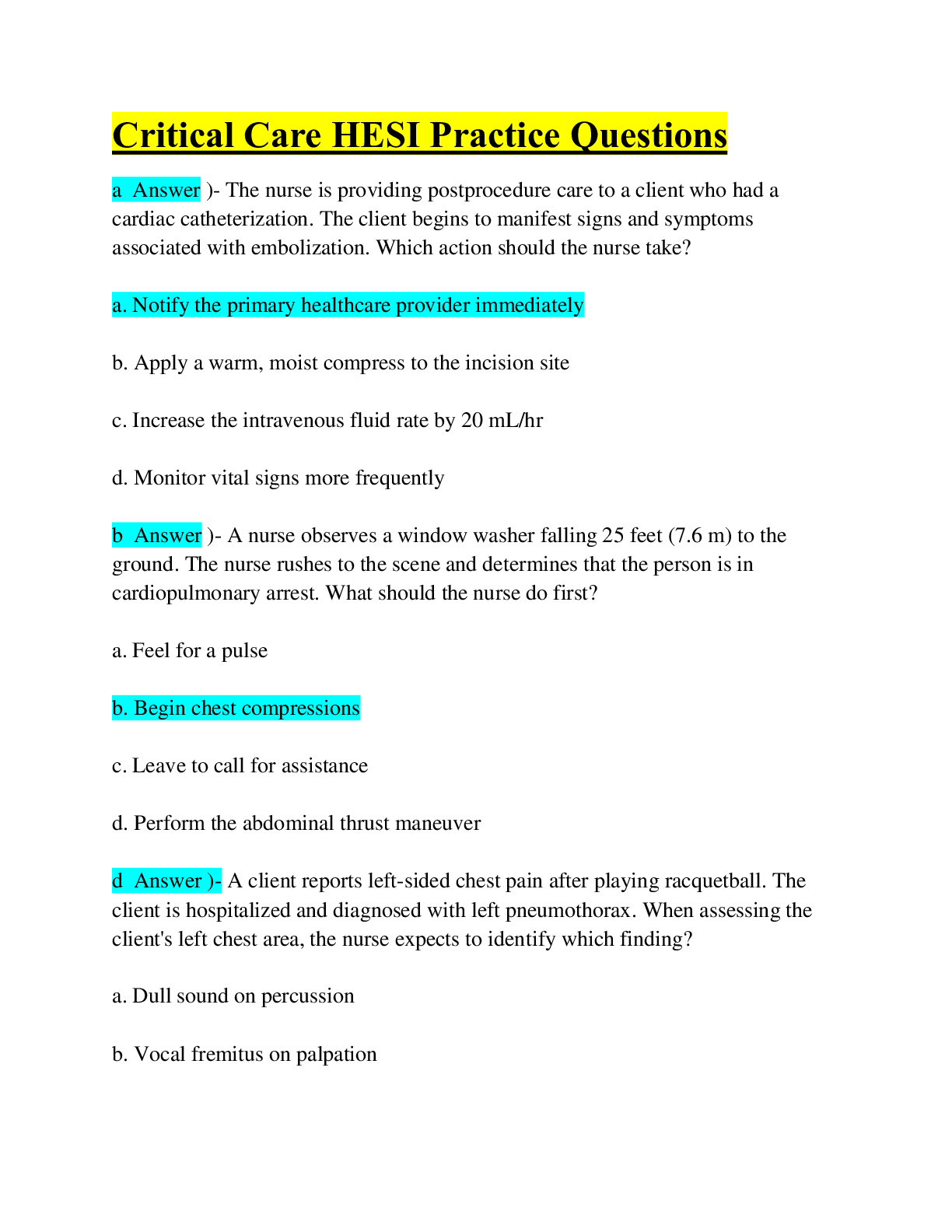*NURSING > EXAM > ACE personal training certification EXAM QUESTIONS & ANSWERS 100% CORRECT SPRING FALL-2022/2023 SOLU (All)
ACE personal training certification EXAM QUESTIONS & ANSWERS 100% CORRECT SPRING FALL-2022/2023 SOLUTION GUARANTEED GRADE A+
Document Content and Description Below
Define intrinsic and extrinsic motivation - Intrinsic is exercising for the pure joy of working out. Extrinsic is exercising for any other reason. Give an example of intrinsic and extrinsic feedbac... k - Intrinsic: Client adjusts his own workout based on his perception of difficulty Extrinsic: Trainer gives performance feedback Define situational and contextual motivation - Situational: How the client feels during exercise Contextual: How the client feels, sees, thinks about exercise Name 5 strategies for dealing with negative social influencers - Avoid, deal with person after workout, explain to the person how the negativity affects your workout, anticipate responding to the nsi, get that person involved with your struggle Name 3 types of high risk relapsers - People with poor time management skills, lack of social support, busy schedules 5 personal attributes influencing exercise participation and adherence - Demographic: Age, education, income, gender Health status: sick people or people with heart disease diabetes ect exercise less Activity history: past exercise participation Psychological traits: self motivated Knowledge attitudes and beliefs: health perception 2 Environmental factors that influence exercise participation and adherence - Access to facilities: Location Time: Lack of time is the most common excuse for not exercisingSocial interactions that influence exercise participation and adherence - If a spouse or a friend is on board the client will be more likely to stick with the program 2 Physical activity factors that influence exercise participation and adherence - Intensity of program: drop pout rate is 2x higher with vigorous activity Injury: program drop out is directly related to injury. 4 stages of the client trainer relationship (RIPA) - Rapport: 1st impression of trainer. client evaluates Apperance, environment, interaction, posture, communication ect. Investigation: Trainer evaluates client using health and fitness data, medical history, exercise history ect. Planning: Give and take. Client and trainer work together to set SMART goals, generate and discuss alternatives, formulate a plan, and evaluate the exercise program. Action: Start working out. Usually a combination of exercises for the client to do with the trainer and at home. Define motivational interviewing. - A way of speaking with people that motivates them to change their behavior. Usually this is used when clients are not ready to commit to an exercise program. Describe how voice quality, eye contact, facial expression, hand gestures, and body positions should looks and what kind of communication are they? - They are non-verbal communication. Eye contact: Direct but friendly. Voice quality: confident but not too loud Facial expression: genuine emotion Hand gestures: flexed, not fidgeting Body position: open *Aggressive= hands on hips* 4 Styles of communication - Preaching: lecture type = bad Educating: informational Counseling: working together to find and solve problems Directing: during exercise directing works Give an example of each interviewing technique: Minimal encourager, paraphrasing, reflecting, probing, clarifying, informing, confronting, questioning, deflecting. - Minimal encourager: "Explain what you mean by.." Paraphrasing: "I understand your ideal wright is.." Reflecting: "it sounds like.." Restate the main points Probing: Ask additional questions to gather more info Clarifying: Verifying what the client is saying Confronting: Using mild to strong feedbackQuestioning: Open ended questions to information given Deflecting: Changing the focus to another person if it relates Define SMART goals. When do you make SMART goals? - Specific: Clear on what client wants accomplished Measurable: How will the client measure progress Attainable: Can be done with the limits and within time frame Relevant: Relevant to the interests of the client Time: Specific time frame/ time line You make smart goals during the planning stage. Name and describe the 3 stages of learning (CAA) - Cognitive: Clients try to understand a new skill *Use tell, show, do technique* Associative: Begin to master the basics and re ready for more specific feedback that will help them refine the motor skill Autonomous: Clients are preforming skill naturally, trainer is doing less teaching and more monitoring. Define product goals and process goals - Product goals: Outcome. Something achieved (weight loss, increase in strength ect.) Process goals: Action. Something a client does (# of workouts per week ect) Define the health belief model and name the 3 stages - The health belief model states that people will engage in a healthy behavior based on the perceived threat they feel regarding a health problem. Perceived seriousness: How serious they think contracting an illness is basically how scared they are of health illnesses Perceived susceptibility: How at risk they think they are for getting an illness. Cue to action: an event or symptom that wakes them up and motivates them to change. *The more scared, at risk or bad the situation is the more likely they are to workout* Define self efficacy and name 6 sources of it - Self efficacy is the belief in ones self to be able to succeed Sources: Past performance experience: strongly influence feelings Vicarious experiences: Clients knowledge of success stories ectVerbal persuasion: Feedback/ statements form others Physiological state appraisals: clients judgments about abilities Emotional state appraisals: mood and feelings Imaginal experiences: perceived notion of what exercise will be like. Define the 5 stages of change in the transtheoretical model of behavioral change (stages-of-changes-model) - 1. Precontemplation: sedentary, not considering an exercise program, do not see activity as important or relevant to them 2. Contemplation: sedentary, starting to consider exercise important, and have begun to see the negative consequences of being inactive, they are still not ready to make a change. 3.Preperation: some sporadic light activity, mentally and physically preparing to adopt and exercise program and are ready to lead an active lifestyle, but are inconsistent 4.Action: client engages in regular physical activity but are have been doing so for less then 6 months 5. Maintenance: regular activity for longer then 6 months [Show More]
Last updated: 1 year ago
Preview 1 out of 31 pages
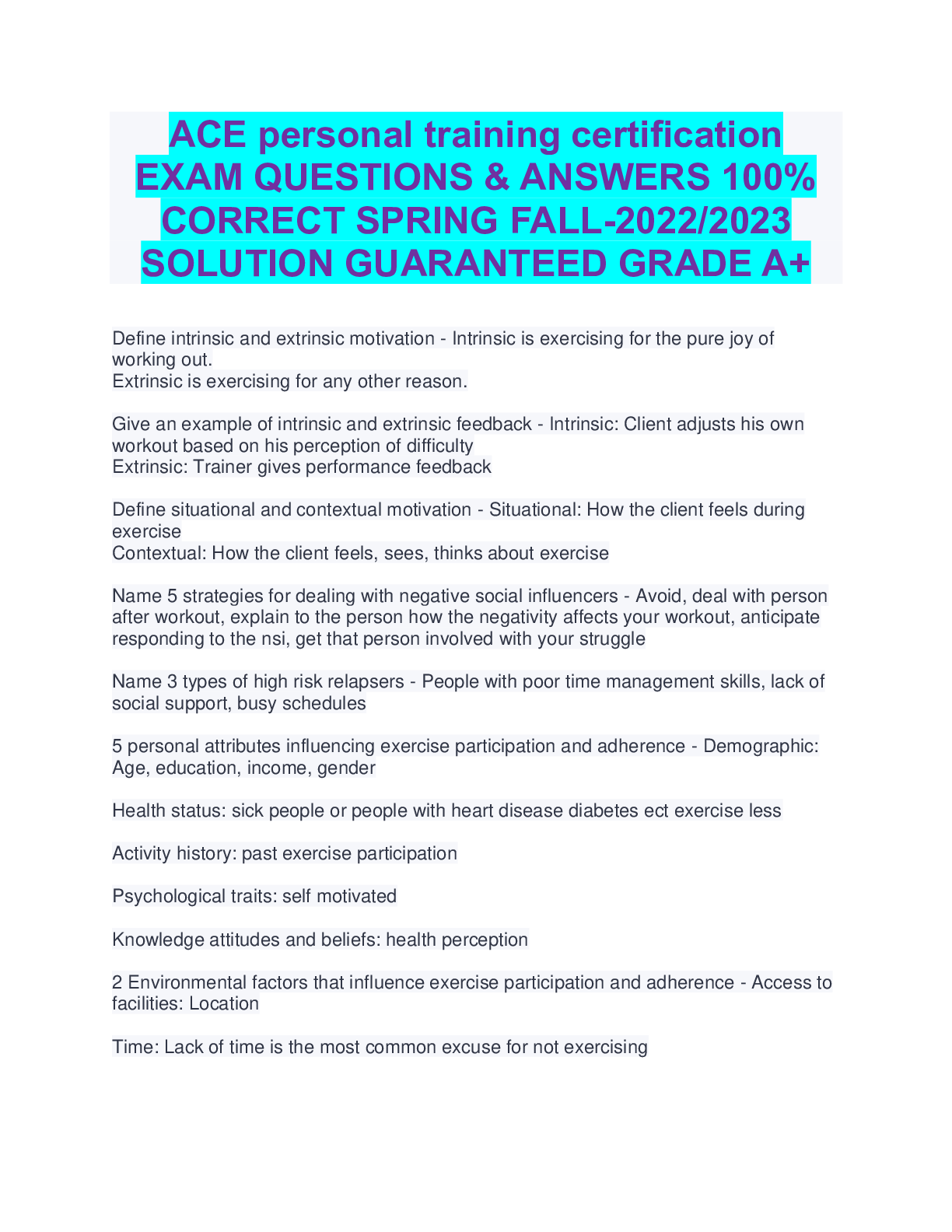
Reviews( 0 )
Document information
Connected school, study & course
About the document
Uploaded On
Aug 21, 2022
Number of pages
31
Written in
Additional information
This document has been written for:
Uploaded
Aug 21, 2022
Downloads
0
Views
45

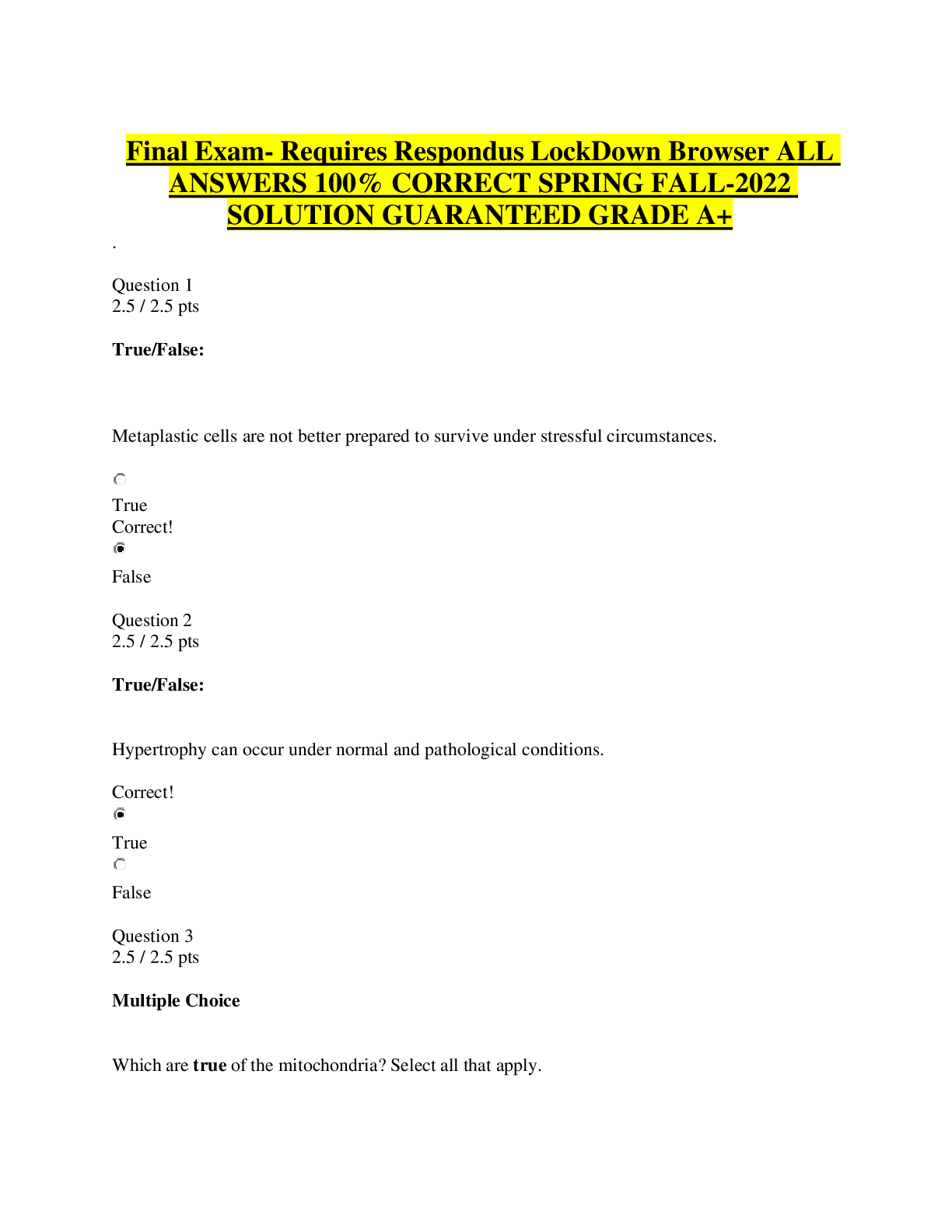


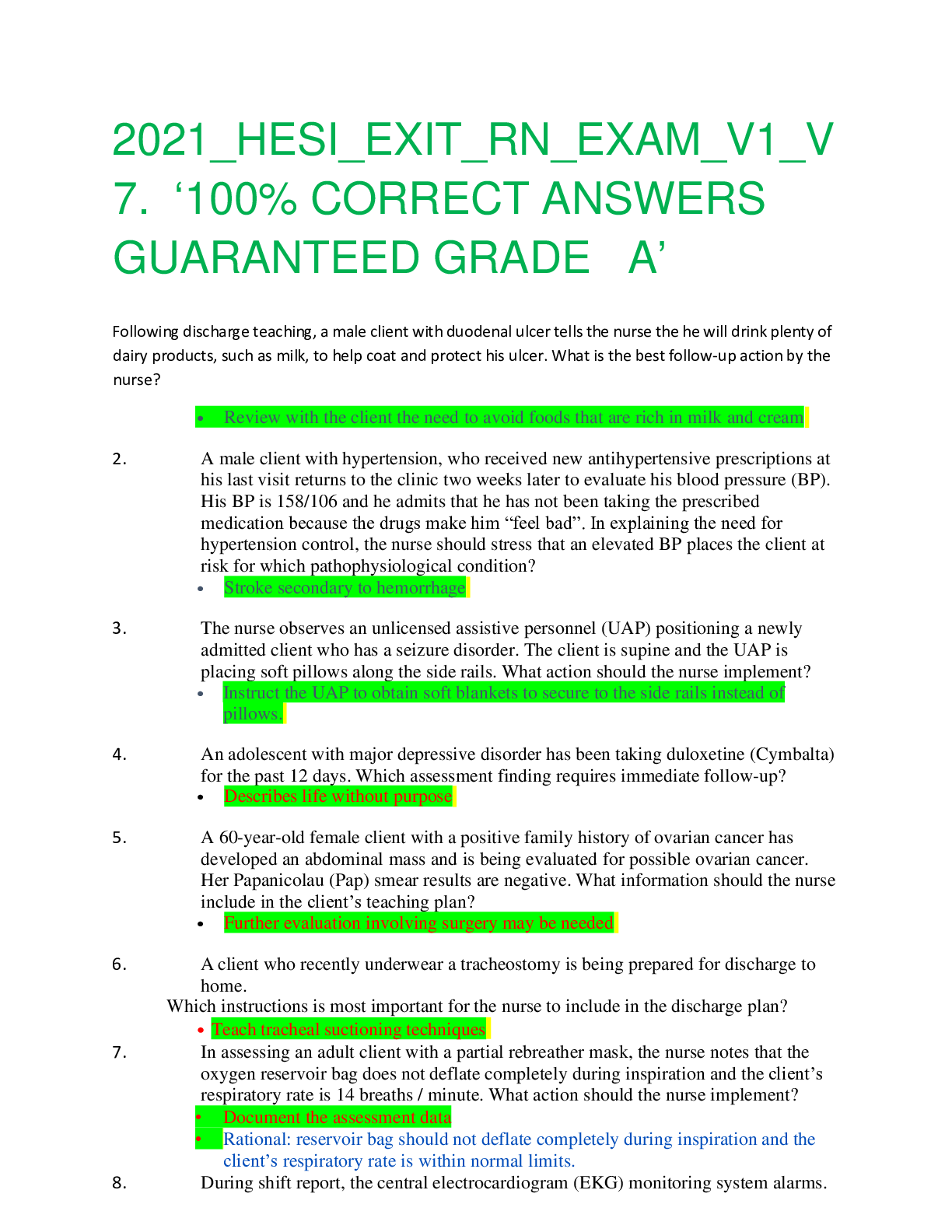
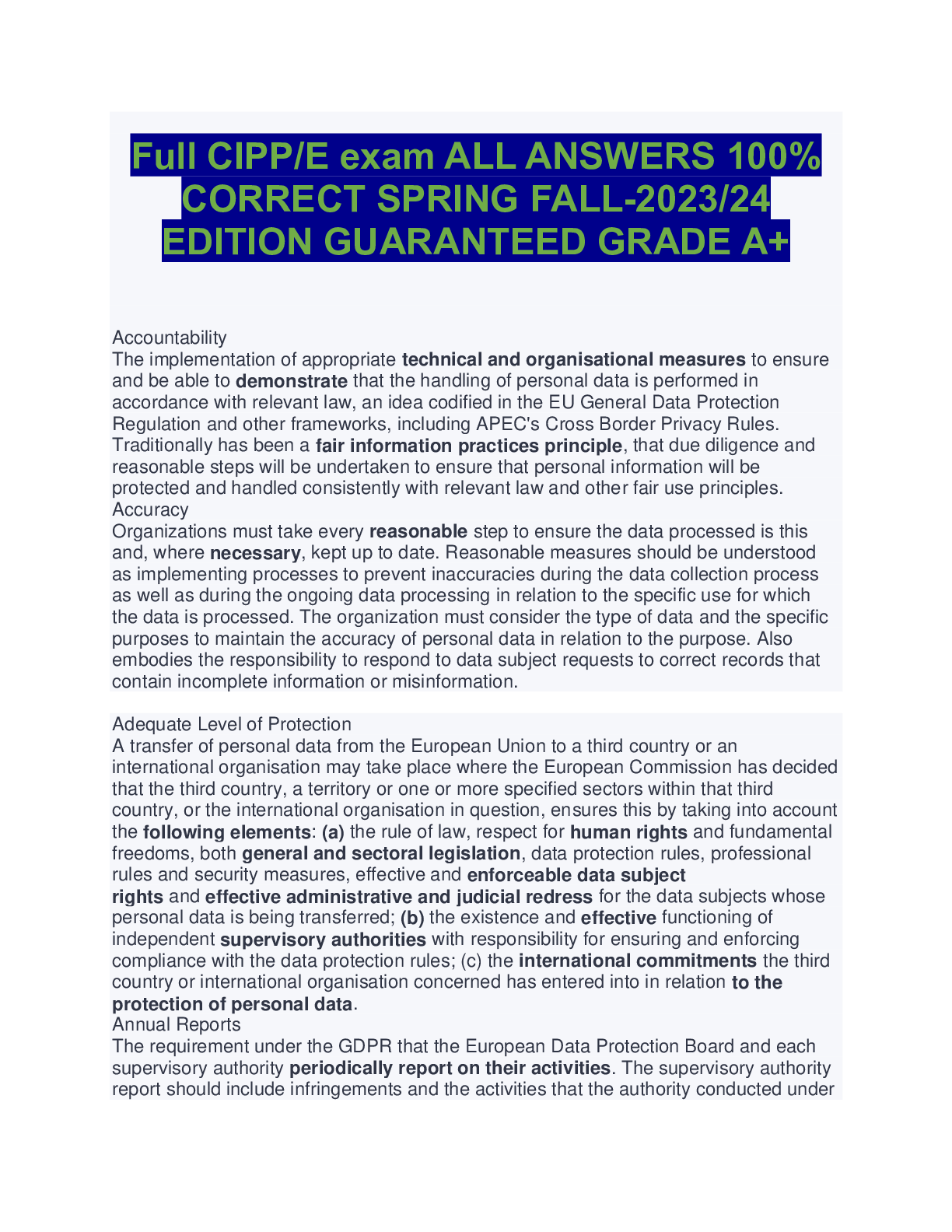

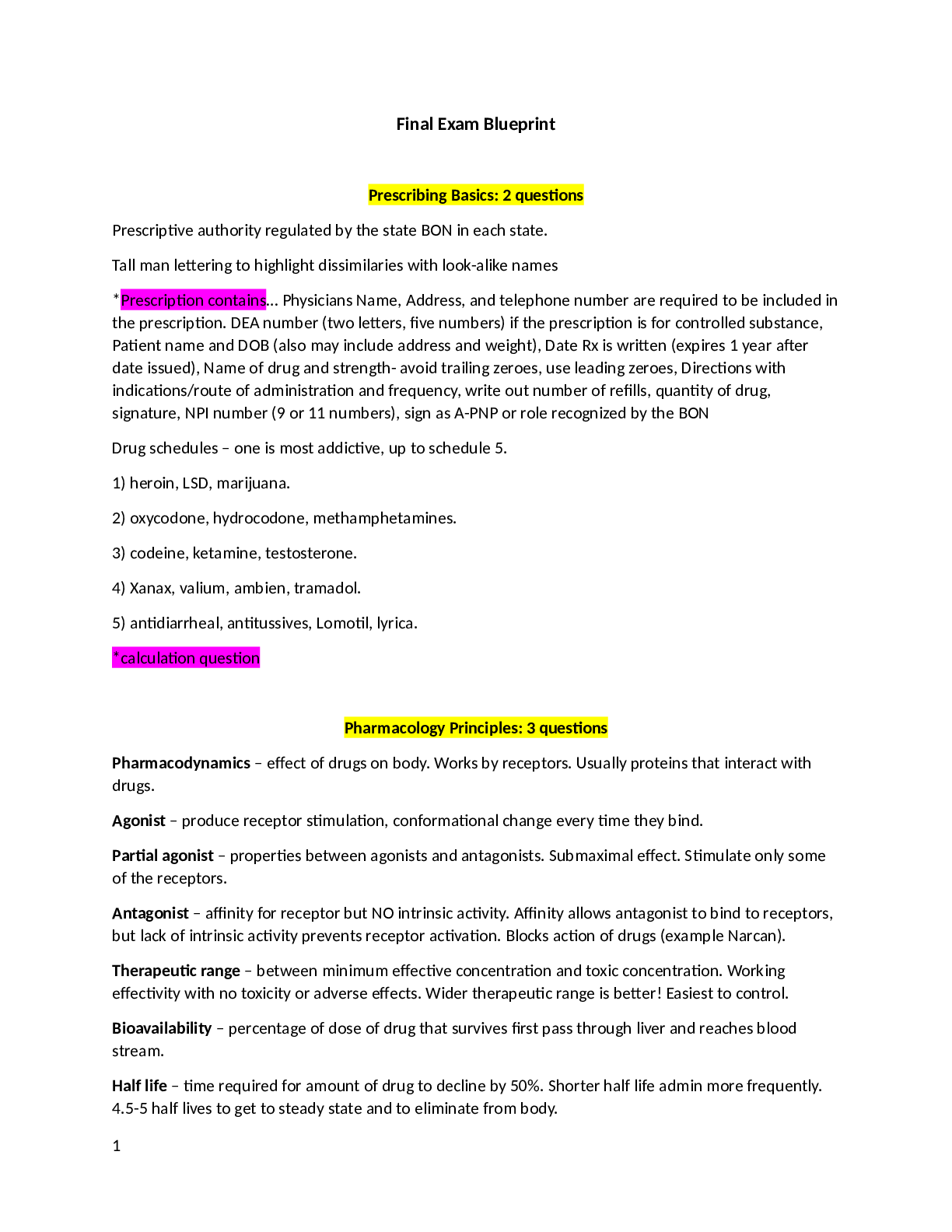

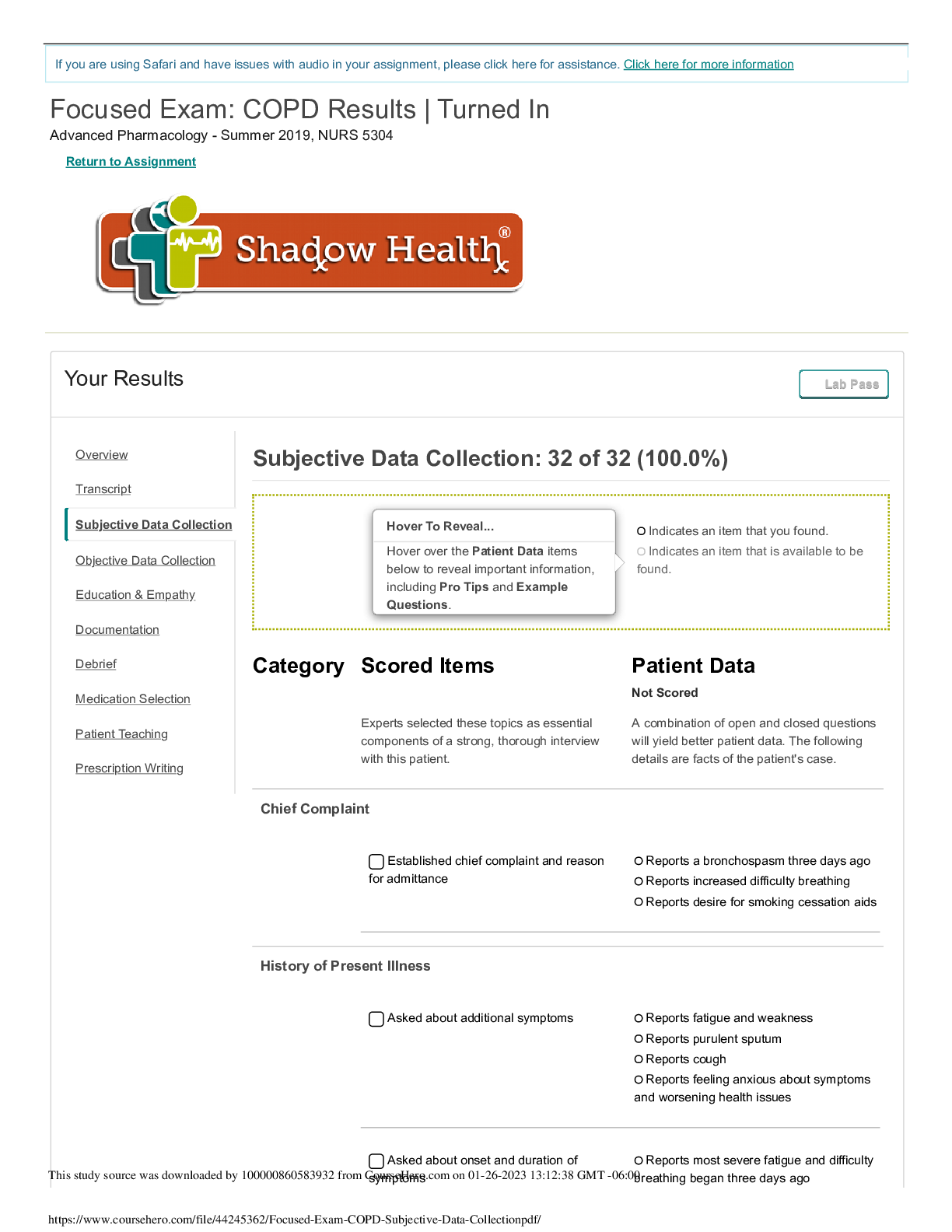
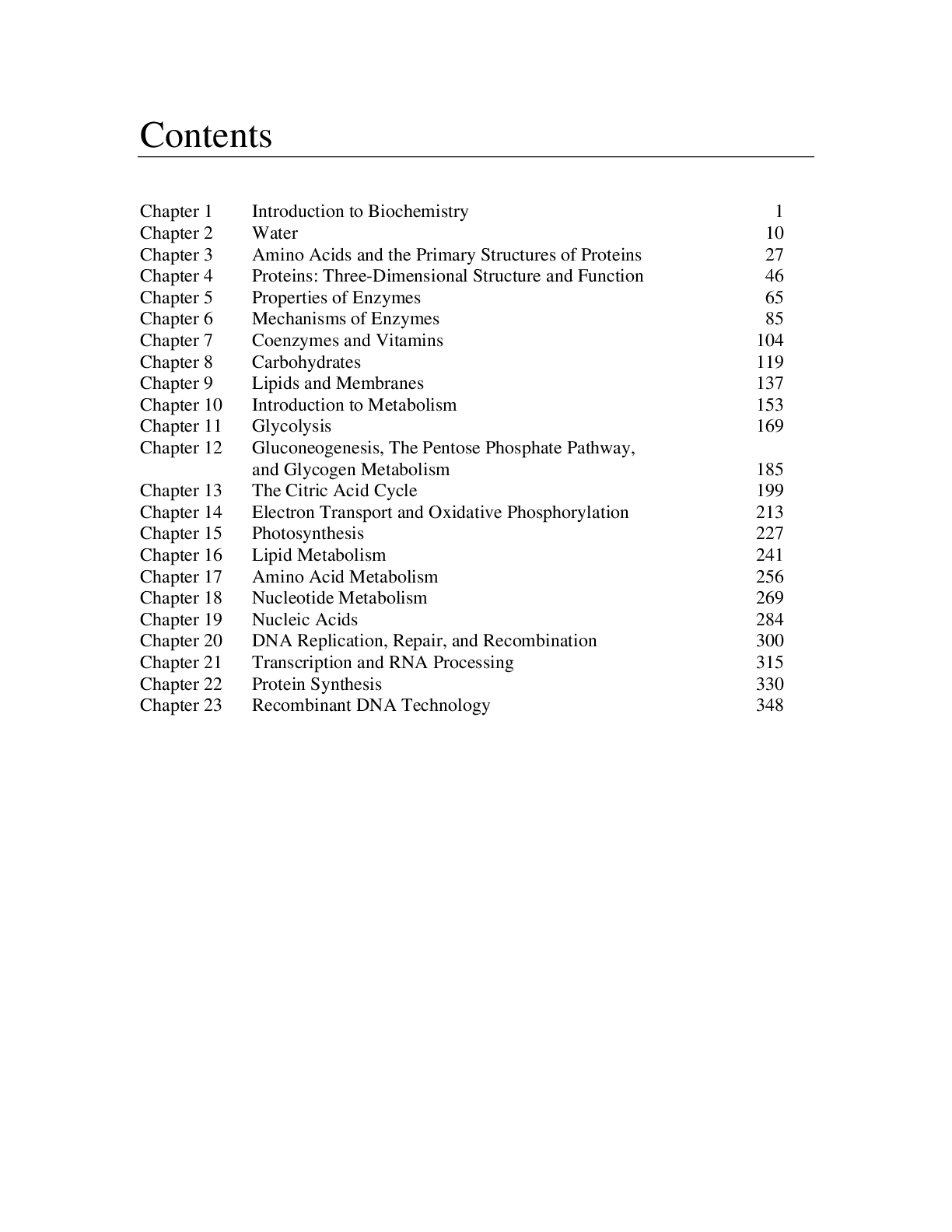
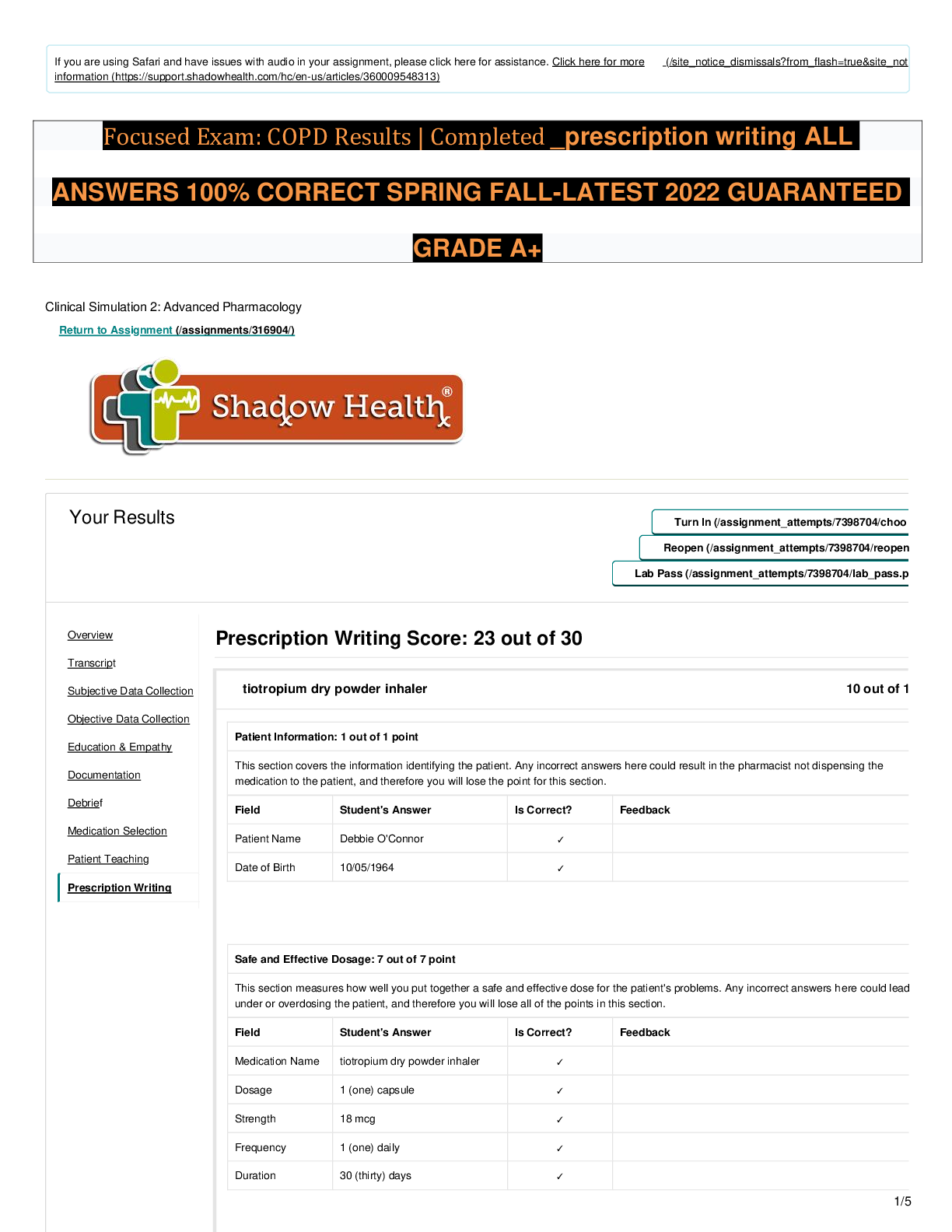
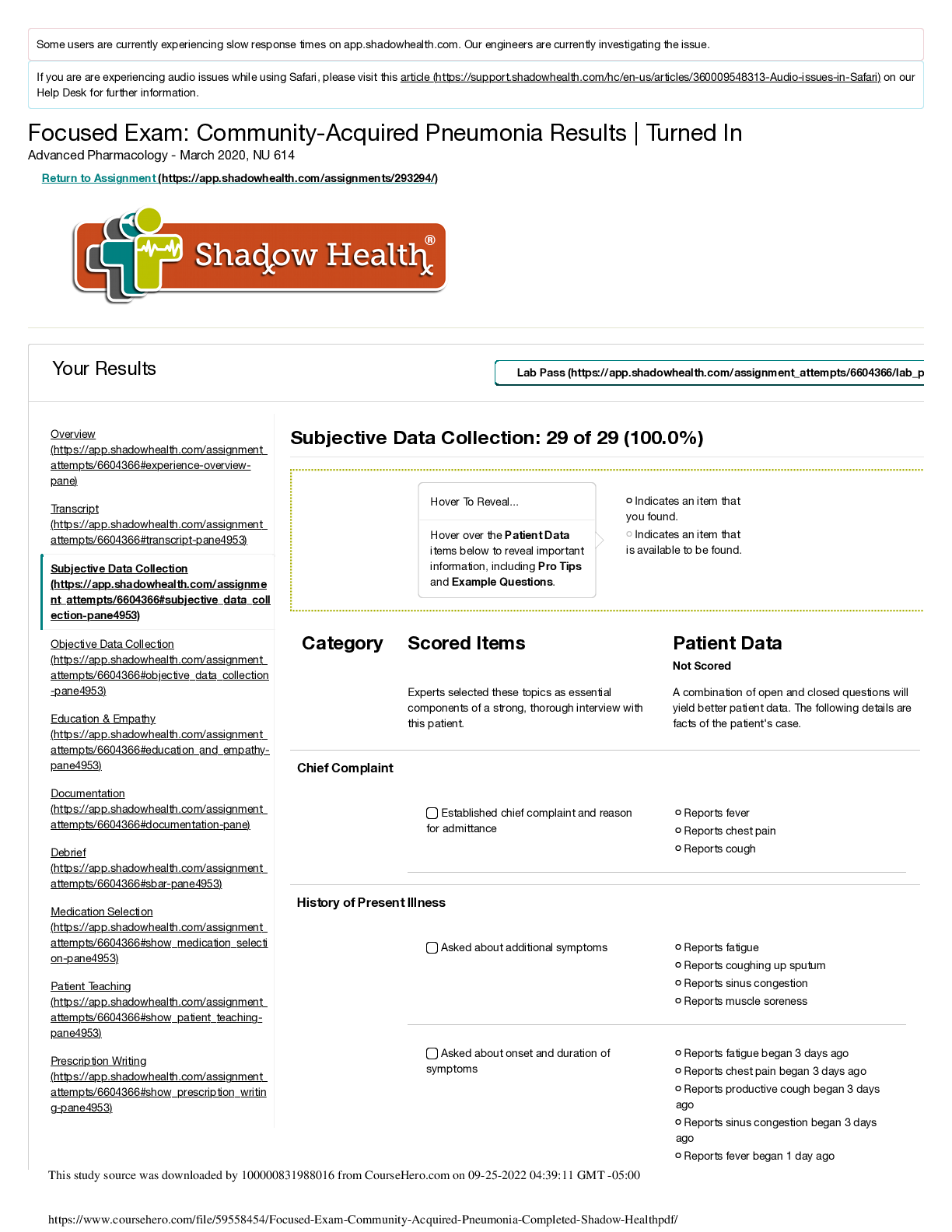
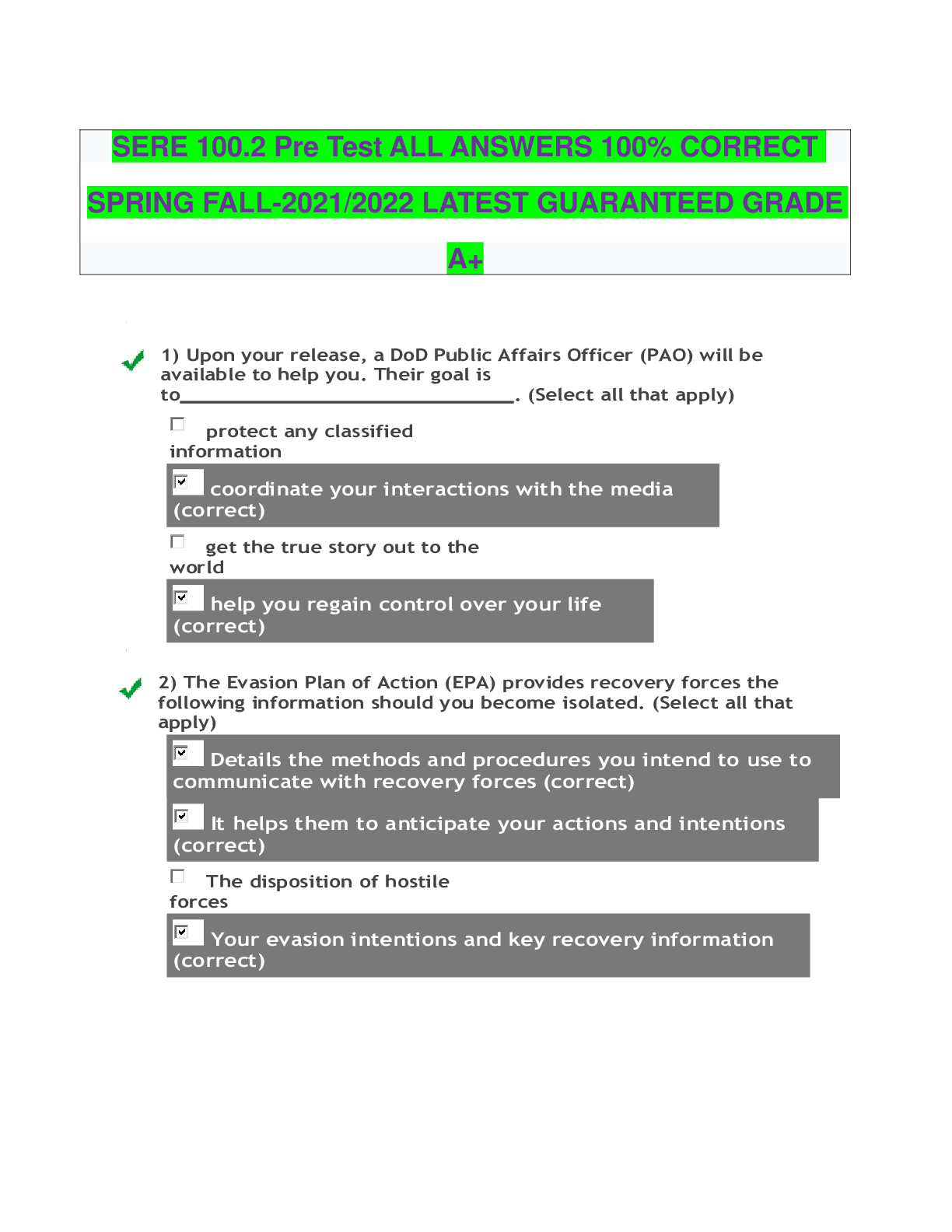


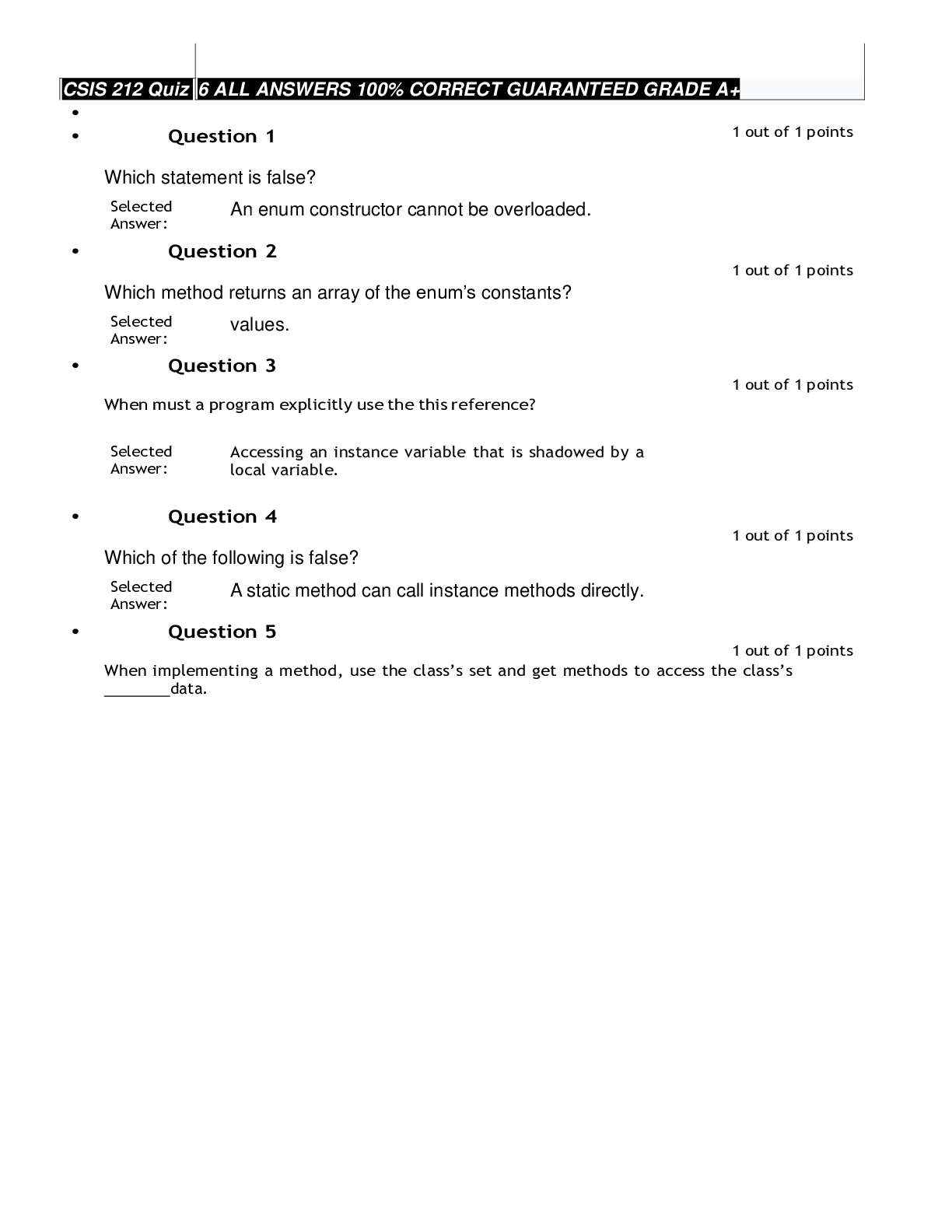




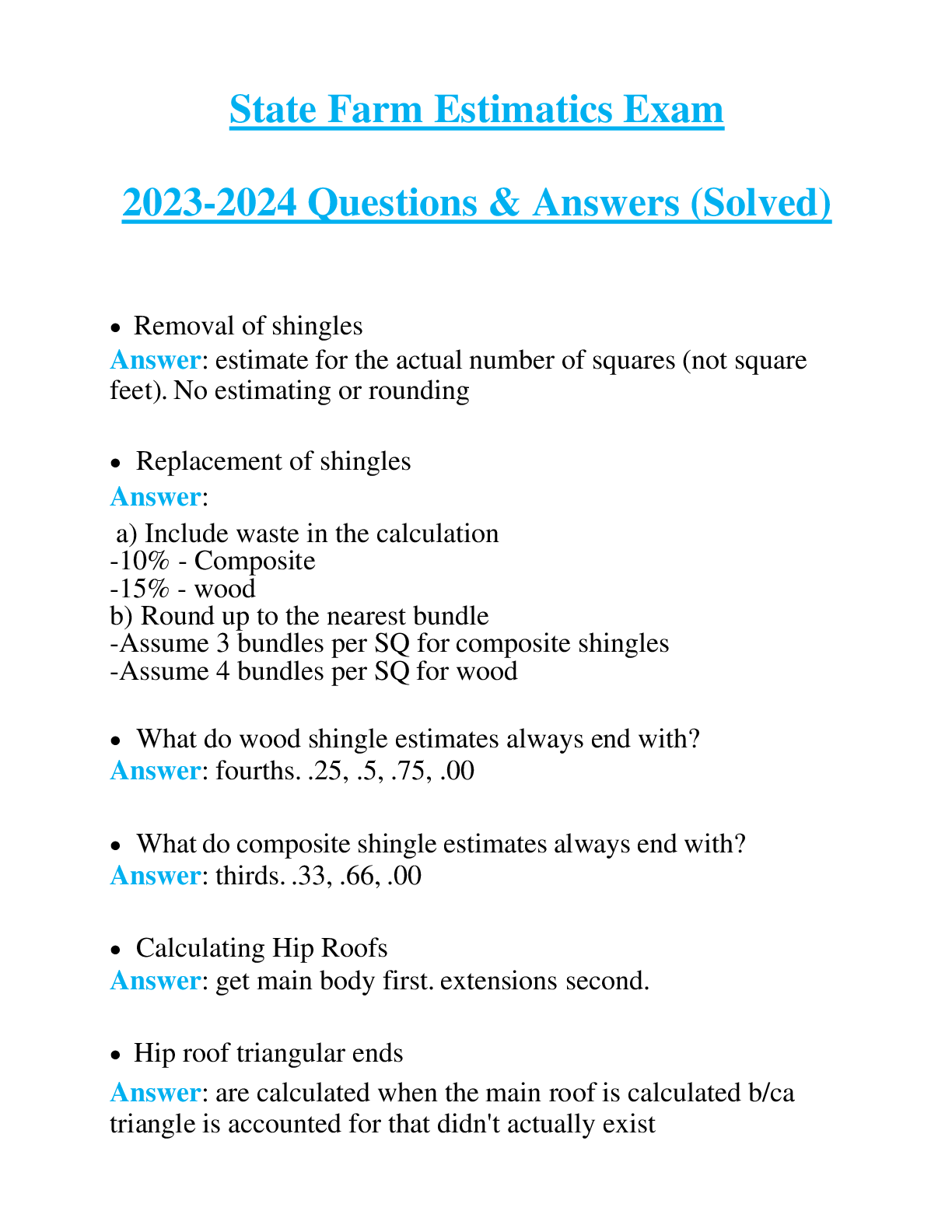
.png)



